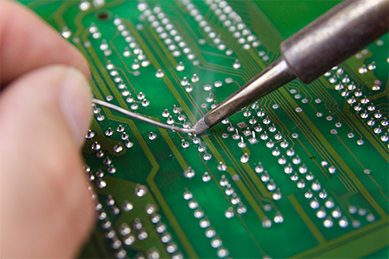In the intricate world of electronic devices, PCBs (Printed Circuit Boards) stand as indispensable components, seamlessly connecting electronic components through conductive pathways and connection points. Among the myriad of features in PCB design and manufacturing, plated-through holes (PTH) and via holes occupy pivotal roles, each with their unique functionalities and characteristics. Today, we delve into the nuanced differences between these two hole types, offering a comprehensive analysis for your PCB design endeavors.
Plated-Through Holes: The Conductive Lifelines of PCBs
Plated-through holes, or PTHs, are a fundamental aspect of PCB manufacturing, where a metal layer, typically copper, is deposited onto the walls of the hole through either electrolytic or electroless plating processes. This metallization enables the hole to conduct electricity, facilitating current flow between different layers of the PCB.
Key Features of Plated-Through Holes:
- Conductivity: The conductive metal layer lining the walls of PTHs allows for seamless electrical connectivity between PCB layers.
- Reliability: PTHs enhance the overall reliability of PCBs by providing robust electrical connections.
- Cost: Due to the additional plating process, the cost of PTHs is generally higher than that of non-plated holes.
- Manufacturing Process: Creating PTHs involves intricate plating procedures, requiring precise control and attention to detail.
- Applications: PTHs are prevalent in multi-layer PCBs, enabling electrical interconnections between internal layers.
Advantages of Plated-Through Holes:
- Multi-Layer Connectivity: PTHs facilitate electrical connections between multiple PCB layers, enabling complex circuit designs.
- Signal Integrity: The well-defined conductive pathways of PTHs help maintain signal integrity, ensuring reliable data transmission.
- High Current Carrying Capacity: PTHs can withstand significant current loads, making them suitable for power-intensive applications.
Disadvantages of Plated-Through Holes:
- Cost: The relatively high manufacturing cost of PTHs can contribute to the overall expense of PCBs.
- Manufacturing Complexity: The plating process adds complexity to the PCB manufacturing flow, requiring meticulous process control.
- Wall Thickness: The metal plating can increase the hole diameter, potentially impacting PCB layout and design considerations.
- Via Holes: The Anchors of Component Placement
In contrast to PTHs, via holes are vertical passages that traverse the entire PCB thickness without being metalized on their walls. Instead, they serve primarily as anchors for physical component installation and fixation, rather than providing electrical connections.
Key Features of Via Holes:
- Non-Conductivity: Via holes do not offer electrical connections as their walls lack a metal layer.
- Physical Connection: They are utilized to secure through-hole components fixed in place via soldering.
- Cost: The manufacturing cost of via holes is typically lower than that of PTHs.
- Manufacturing Process: The fabrication of via holes is relatively straightforward, eliminating the need for plating.
- Applications: Via holes find use in single- or double-layer PCBs and for component mounting in multi-layer PCBs.
Advantages of Via Holes:
- Cost-Effectiveness: The lower manufacturing cost of via holes contributes to cost savings in PCB production.
- Simplified Design and Manufacturing: The absence of plating simplifies PCB design and manufacturing processes.
- Component Installation: Via holes provide a straightforward and efficient means of installing and securing through-hole components.
Disadvantages of Via Holes:
- Electrical Connection Limitations: Via holes do not offer inherent electrical connections, necessitating additional traces or pads for interconnection.
- Signal Transmission Constraints: They are not suitable for applications requiring multi-layer electrical connections.
- Component Type Limitations: Via holes are primarily used for through-hole components, limiting their applicability to surface-mount technology (SMT) components.
Conclusion
In the intricate tapestry of PCB design and manufacturing, plated-through holes and via holes occupy distinct niches. PTHs excel at providing electrical connections between PCB layers, enabling complex circuitry, while via holes serve as the anchors for component placement. The choice between these two hole types ultimately depends on the specific application requirements, cost considerations, and design complexities, each offering a unique solution tailored to the needs of modern electronics.





